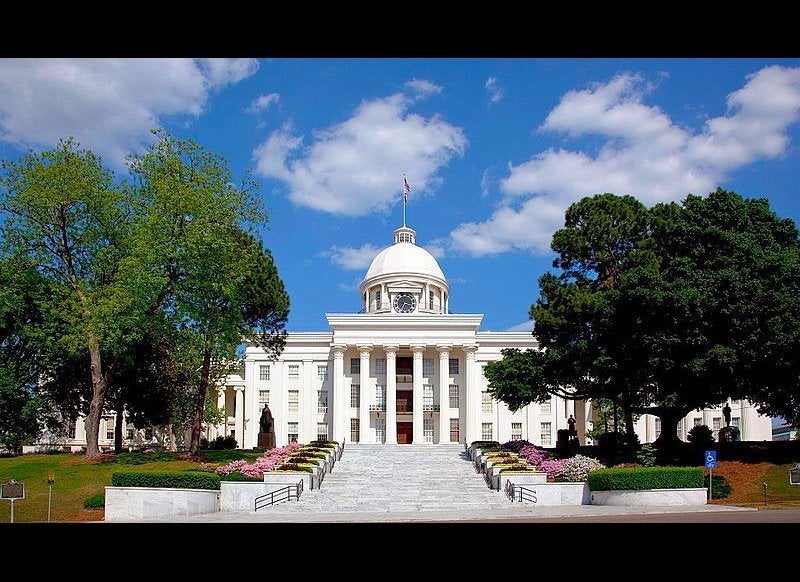
The federal Pell Grant program was designed to help college students coming from low-income families afford the high cost of going to college without getting buried in debt. But the Pell Grant now covers less than one-third of the cost of attendance at public four-year university, the lowest in its history.
Where the maximum Pell Grant once covered the entire cost of obtaining a two-year degree and 77 percent of the cost at a public university in 1980, it now covers only 62 percent of the cost of a two-year degree and 36 percent towards a public four-year degree.
Even though the Pell Grant has never covered such a small fraction, it's been subject to repeated attempts to cut it and make sure it continues to shrink in the future. At the same time, the cost of college is projected to increase faster than inflation.
Meghan McClean, director of policy and federal relations at the National Association of Student Financial Aid Administrators, said the Great Recession has created a "perfect storm": More people are going back to school, states have scaled back higher education support, and tuition is growing faster than the Pell Grant can keep up.
The History
Pell Grants were born during Richard Nixon's presidency. The Basic Educational Opportunity Grant, later renamed the Pell Grant, was created in a 1972 reauthorization of the Higher Education Act of 1965. The HEA was a piece of Lyndon Johnson's Great Society agenda, sometimes referred to as the War on Poverty, and it's subject to reauthorization every five or six years. The Pell Grant was named for Sen. Claiborne Pell, a popular Rhode Island Democrat, who served from 1961 to 1997, and died in 2009.
The population of college students greatly increased during the 1960s and '70s, as the boomer generation headed off to school. After creating a federal student loan program, money which must be paid back after graduation, the Pell Grant program was added to provide money which does not need to be repaid.
The idea was to ensure access to higher education for lower income people, since, according to census data, college graduates earn 82.8 percent more than those who only obtain a high school diploma -- almost twice as much. That gap has been growing quickly since the start of the Pell program.
Declining Support, Increasing Tuition
The cost of obtaining a college degree has increased 1,120 percent over the past three decades, about five times the rate of inflation, and a rate with which the Pell Grant simply isn't able to keep up.
The maximum grant in the first year of the program was $452, but quickly increased to $1,400 within a couple of years. That first year though, the maximum $452 Pell Grant covered almost all of a student's tuition, since the average tuition at public universities in 1973 was $490. Last year, the average in-state tuition was $8,244, while the maximum Pell Grant was $5,550.
Some states set in-state tuition far higher, like Pennsylvania State University, where in-state tuition was $15,250 in 2010-11. And many Pell Grant students do not receive the full $5,550, since the grant amount is dependent on a number of variables including family size and income. Nevertheless, half of recipients come from families earning $15,000 or less annually.
Despite the high cost, more high school graduates are going on to college than in 1973 when the Pell Grant began, but they're also going into debt in the process.
Nine out of ten Pell Grant recipients have student loan debt, according to the Institute for College Access and Success. Data from the Department of Education shows they're more than twice as likely to take out student loans as students not receiving Pell Grants.
Abby Miller, an independent consultant who's worked with the Pell Institute, says the Pell Grant's purchasing power has suffered a "pretty dramatic drop, especially when you look at the amount of loans that Pell recipients are taking out." Miller says student debt over the last 10 years for Pell recipients has increased by 90 percent, while their starting salaries upon graduating have only increased by 9 percent.
So students from the poorest families who receive Pell Grants are graduating college with more debt than ever before.
The income achievement gap between children from the richest families and the poorest has grown during the same period: Thomas Edsall noted in a recent New York Times column that "the income achievement gap between children from the highest and lowest income deciles is roughly 30 to 40 percent larger among children born in 2001 than among those born in 1976."
In addition, as the poverty rate has increased since 2008, the number of people applying for federal financial aid has skyrocketed. The number of Pell Grant recipients has grown from 3.9 million in 2000-01 to 9.1 million in 2010-11.
But instead of supporting this assistance for students pursuing a college degree, Congress has sought to cut Pell Grants and turned the program into a political football.
Recent Cuts
President Barack Obama increased Pell grants in his stimulus bill -- the American Recovery and Reinvestment Act. The president then proposed indexing Pell Grants for inflation and increasing the Pell to $5,975 by 2020, but Congress never followed up to enact that into law.
When Republicans took the House majority in 2011, the first piece of legislation passed included a $5.7 billion cut to Pell Grants, though the bill never made it through the Senate. Later, however, Pell Grants were cut during the debt ceiling debacle in the summer of 2011.
But in the Budget Control Act of 2011 -- a deal reached between Congress and the president to raise the debt ceiling -- overall Pell Grant funding was boosted.
Then, in December 2011, when a government shutdown was looming, the deal congressional leaders struck included a provision which preserved the maximum Pell Grant, but reduced eligibility to use them from 18 semesters to 12. An estimated 62,000 to 100,000 students could be hurt by this change.
The summer Pell Grant has also been eliminated.
Increasing the maximum Pell Grant is not a cheap task. The Congressional Research Service says it costs between $500 million and $700 million for every $100 increase. That may explain why the most recent proposal in the U.S. Senate was only to increase the maximum grant by $85. But even as the maximum grant is scheduled to increase, the Congressional Budget Office projects the cost of the Pell Grant program will actually decline slightly and then remain stable over the next decade.
Contrary to what the Wall Street Journal editorial board recently declared, Pell Grants haven't been responsible for rising tuition. States have scaled back support for public higher education since 1985, causing universities to rely more on tuition than state dollars. Tuition hikes have followed, especially during the recession. But Congress hasn't boosted Pell Grants along with them.
The Paul Ryan budget, widely endorsed by members of the GOP, would reduce the maximum grant to $3,040, according to the national nonprofit Education Trust.
The U.S. Conference of Catholic Bishops specifically cited cuts to Pell Grants as one of their prime concerns in a letter sent to congressional leaders earlier this year. The letter said Pell Grants and other programs for low-income Americans were "essential for human dignity," adding, "We fear the pressure to cut vital programs that protect the lives and dignity of the poor and vulnerable will increase.”
McClean, of the National Association of Student Financial Aid Administrators, said the higher education community has had to fight to preserve the maximum Pell Grant and needs to realize that as long as the federal government is financially strained, the program could be in jeopardy.
"Even though everything's on the table," McClean says, "we need to know as a country [the Pell Grant] is important to our future and our national competitiveness."
HuffPost Live will be taking a comprehensive look at the persistence of poverty in America Aug. 29 and Sept. 5 from 12-4 p.m. EDT and 6-10 p.m. EDT. Click here to check it out -- and join the conversation.

